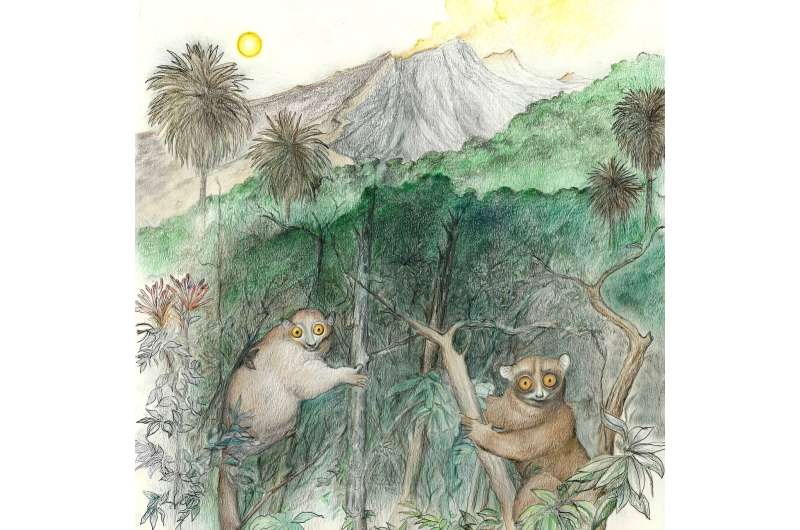This article has been reviewed according to Science X's editorial process and policies. Editors have highlighted the following attributes while ensuring the content's credibility:
fact-checked
peer-reviewed publication
trusted source
proofread
Two new species of ancient primates resembling lemurs identified

Fossil evidence from the Tornillo Basin in West Texas and the Uinta Basin in Utah reveals two new species of omomyids—a family of small-bodied early primates from the Eocene epoch. The findings also clarify previously disputed taxonomic distinctions among these primates, according to researchers from The University of Texas at Austin, Des Moines University in Iowa and Midwestern University in Arizona.
The study, published in the Journal of Human Evolution, significantly expands the fossil record of primates from these regions and also allowed the researchers to confirm the existence of three distinct genera of omomyids.
"Since fossil primates were first discovered in North America in the 1860s, only a handful of specimens from the late middle Eocene of Texas and Utah have been described," said Chris Kirk, professor of anthropology at UT and first author on the paper. "For the larger members of the extinct primate family Omomyidae, these small sample sizes have led to some confusion, with past authors unable to agree whether there are one, two or three genera represented."
Omomyids initially had body masses below 500 grams, but some evolved to double that size during the late middle Eocene. The two new species identified—from the genera Ourayia and Mytonius—are on the larger end of the spectrum. They probably resembled present-day small to medium-size lemurs and consumed a diet of fruit and leaves.
Both new species appear to be endemic to the Tornillo Basin and differ from fossil primates found in other parts of North America.
"This distinctiveness of the West Texas primate community suggests that they were evolving at least partly in isolation, with perhaps relatively few opportunities for migration or gene flow with communities of primates living in other parts of North America at the same time," Kirk said. "Eocene primates in the Big Bend may also have been adapting to the local environmental conditions."
The study also expanded the fossil evidence of three previously discovered species—Diablomomys dalquesti, Mytonius hopsoni and Ourayia uintensis—painting a clearer picture of these primates' anatomies and diets.
Previous studies on the evolution of Eocene primates focused on earlier periods and regions with more abundant fossil samples, such as Bighorn and Bridger basins in Wyoming. Increasing the sample of fossil primates from different regions may offer insights into the changing environmental factors that shaped these divergent populations.
"The fact that more than 150 years after the first Eocene primates from North America were first described, I can travel eight hours from my home in Austin and find new species of fossil primates in the Big Bend country is still astonishing to me," Kirk said.
"There is so much interesting research that remains to be done on these Texas primates. It's a reminder of how many gaps still exist in the fossil record, and how many important paleontological discoveries are waiting to be made, sometimes even more or less in our own back yards."
More information: E. Christopher Kirk et al, New specimens of middle Eocene omomyines (Primates, Omomyoidea) from the Uinta Basin of Utah and the Tornillo Basin of Texas, with clarification of the generic status of Ourayia, Mytonius, and Diablomomys, Journal of Human Evolution (2023). DOI: 10.1016/j.jhevol.2023.103425
Journal information: Journal of Human Evolution
Provided by University of Texas at Austin





















